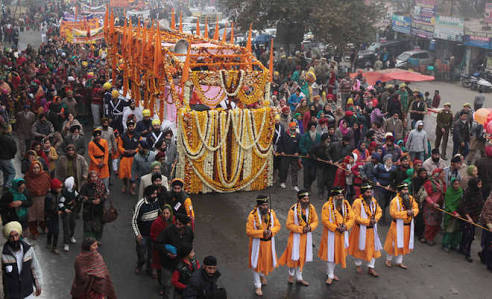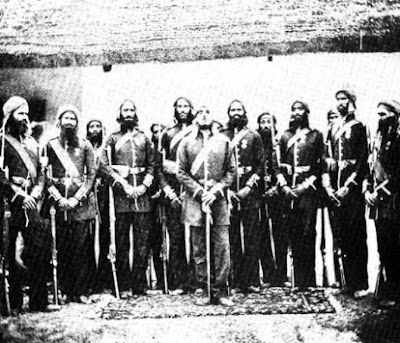The History of Nagar Kirtan | Sikh Knowledge | Sikh History
September 25, 2018
The History of Nagar Kirtan | Sikh Knowledge | Sikh History
The History of Nagar Kirtan | Sikh Knowledge | Sikh History
Soucre - http://www.tapoban.org
Nagar Kirtan is celebrated all over the world,
Let's find out the history of Nagar Kirtan.
It seems that the tradition of Nagar Kirtan was started by Baba Buddha jee, when Siri Guru Hargobind Sahib jee stayed imprisoned in the jail of Jahangir (Gawalior Jail) for a period of 40 days. Baba jee along with the sangat could not bear separation from Siri Guru jee. Baba jee led the sangat to Gawalior and they used to do Nagar Kirtan around the jail, out of love for Sri Guru ji.
It is said that Siri Guru jee was extremely pleased with Baba jee for starting this tradition of doing kirtan of baani (jotiyaan waalay shabad) and expressing pyaar for Guru jee. From that day, Sikhs started celebrating the Gurpurabs of Guru Sahibaan doing nagar kirtan.
Sikhs found out long time ago that nagar kirtan were a great mean of bringing unity in Panth and in doing parchaar.
In the recent history, Bhai Sahib Randhir Singh jee used to go village to village, with vaaja around his neck, doing kirtan. This kind of kirtan journeys did massive parchaar.
It is said that Baba Attar Singh jee Mastuanaywaaly promoted nagar kirtan on a large scale. He organized some of the largest nagar kirtan programs.
Sant Kartar Singh Bhindranwaalay did some of the most memorable nagar kirtan programs in Punjab, in the 1970s. At one time, he organized a nagar kirtan in Batala town of Gurdaspur. The Police in-charge of that area was a very anti-Sikh person. He tried to stop the nagar kirtan, Sant ji reprimanded him heavily and told him that he should not try to stop the nagar kirtan, rather he should welcome the nagar kirtan to the city with folded hands. Batala is known for extremist Hindu elements and is a stronghold of the Hindus. Even during the height of militant days, the Chakri Bazaar of Batala was inaccessible to the Singhs.










